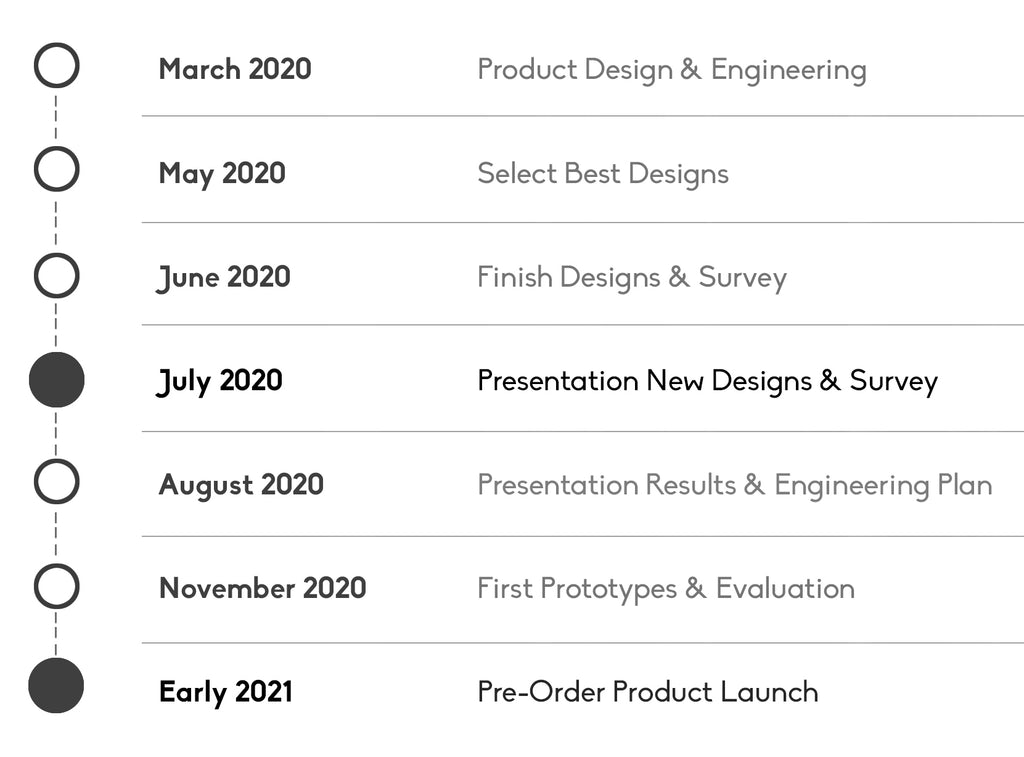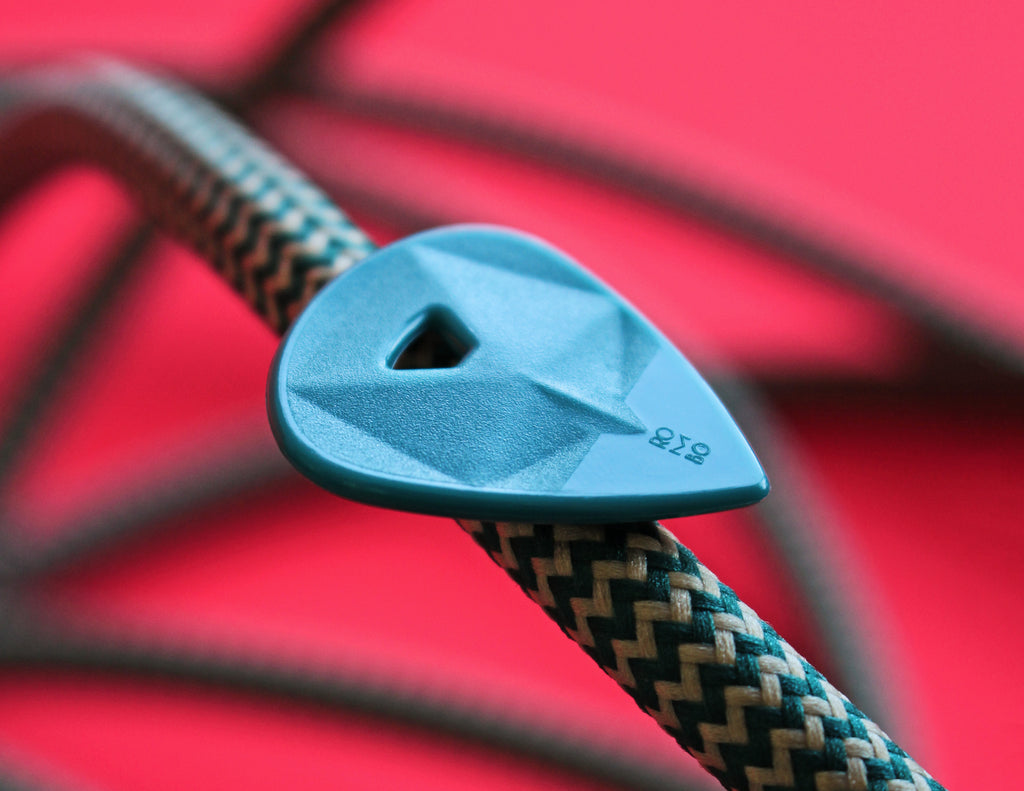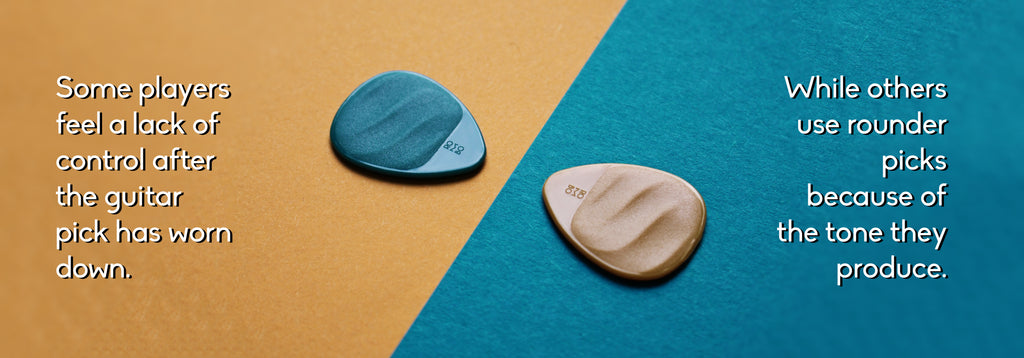Free gift from 40 € | free shipping from 35 € | free mystery pick from 60 €
-
Shop
- All Products
- All Collections
- NEW
- Sample packs
- Bundle Offers
- Guitar Pick Sets
- Guitar Pick Sets EcoBlack - 100% recycled material
- CrystalBright tones - Hand-polished picks
- Guitar Pick Gift Boxes
- Guitar Pick Gift Boxes EcoBlack - 100% recycled material
- Special Editions
- Last units
- Other Guitar Accessories
- Insights
-
About ROMBO
- Dealers
- Guitar Pick finder
- Gift Card
+Categories
- accessories
- bass
- bass pick
- bass picks
- bass plectrum
- bass plectrums
- beginner
- bright tone
- chose guitar pick
- chose guitar picks
- chose plectrum
- chose plectrums
- CrystalBright
- Diamond
- Diamond pick
- discipline and guitar
- DIY generation
- durability pick
- durable pick
- eco
- ecoblack
- find guitar pick
- find plectrum
- fingers vs picks
- grip
- grip guitar pick
- guitar accessories
- guitar advantages
- guitar benefits
- guitar career
- guitar health
- guitar injury
- guitar learn
- guitar lesions
- guitar lesson
- guitar method
- guitar noise
- Guitar noise plectrum
- guitar pain
- guitar pick
- guitar pick beginner
- guitar pick bevel
- guitar pick buy
- Guitar pick diamond
- guitar pick durability
- guitar pick durable
- guitar pick eco
- guitar pick features
- guitar pick grip
- guitar pick material
- Guitar Pick Noise
- Guitar Pick online
- guitar pick recycled
- guitar pick recycled material
- guitar pick special features
- guitar pick textures
- guitar pick thickness
- guitar pick variable thickness
- guitar picks
- guitar tone
- guitar warm-up
- guitarpick
- guitarpicks
- hold a guitar pick
- hold guitar pick
- hold guitar picks
- hold pick
- hold plectrum
- hold plectrums
- how to
- how to chose your guitar picks
- jazziii
- learn guitar
- lose guitar pick
- material
- materials
- mental health and guitar
- motivation and guitar
- music
- not to lose guitar pick
- Online guitar
- online guitar pick
- online guitar pick buy
- pick
- pick durability
- pick material
- pick noise
- Picks
- picks vs. fingers
- play bass fingers
- play bass picks
- play bass with fingers
- play bass with pick
- play bass with picks
- play bass with plectrum
- play guitar faster
- plectrum
- plectrum attributes
- plectrum beginner
- plectrum bevel
- plectrum characteristics
- plectrum features
- plectrum grip
- plectrum material
- plectrum noise
- plectrum recycled
- plectrum shape
- plectrum variable thickness
- plectrums
- Plek
- pua
- recycled
- recycled guita pick material
- recycled guitar picks
- recycled picks
- recycled plectrum
- Rombo Diamond
- rombopicks
- tendonitis guitar
- the guitar pick
- tone
- variable thickness
- warm tone
- warm-up guitar

Medium Gauge Guitar Picks
Medium guitar picks are the most popular choice amongst guitarists and they offer the best of both worlds, right? Well, it is not that easy.

In our last article, “thin vs thick guitar picks”, we discussed both guitar pick thickness ranges in depth. Medium guitar picks deserve a separate analysis.
1- Why does guitar pick thickness matter?
Guitar pick thickness is usually measured in millimeters and this is an attribute that can change various aspects of a pick like flexibility, tone, volume, pick noise, durability, control over single notes, and more.

The thickness of a guitar pick is for this reason considered one of the 4 fundamental attributes of a guitar pick, along with guitar pick material, shape, and size.
2- Medium guitar pick thickness:
Medium guitar picks range in thicknesses from 0.55 and 1 mm.
The following is what a survey performed in March 2021 has shown. Thousands of guitarists were asked to define the following pick thicknesses:
- The maximum thickness of a thin guitar pick
- The minimum thickness of a thick guitar pick
With both limits established, we obtain the thickness definition of medium guitar picks.

The maximum thickness of a thin guitar pick was defined as about 0.55 mm by 2.292 guitarists.

The minimum thickness of a thick guitar pick was defined as 1 mm by 1.308 guitarists.
3- What is a medium guitar pick?
Medium guitar picks are guitar picks with a thickness between 0.55 and 1 mm. These guitar picks are very popular because of their versatility; in some areas, they offer the advantages of both thin and thick guitar picks.

Medium gauge picks have the broadest flexibility range. In this pick thickness interval, the material will play the most important role when it comes to defining the flexibility of a pick.
In other words, thick guitar picks are always stiff and rigid. With thicknesses over 1 mm, even the most flexible pick materials are stiff, and therefore the material has less influence on the flexibility of the pick. This relation creates a broad flexibility range amongst medium guitar picks, which can be very flexible or very stiff, depending on the material used.

The same effect can be applied to tone, durability, and pick noise.
Typically, medium guitar picks are used by lead guitarists who also implement rhythm guitar techniques and look not only for an all-round compromise between single-note melodic phrases and strumming, but also potentially developing a more versatile guitar career that integrates different techniques and mixes both worlds together.
4- Thin, medium and thick guitar picks:
|
|
Thin guitar picks (under 0.55 mm) |
Medium guitar picks (0.55 - 1 mm) |
Thick guitar picks (over 1 mm) |
|
Flexibility |
Flexible/very flexible |
Medium flexibility or stiff, depending on the material. |
Rigid/very rigid |
|
Tone |
Lighter tones, less bass |
Warm tones for softer materials. Brighter tones for harder materials. |
Warm/dark tones and mellow tones |
|
Volume |
Maximum volume is limited. Lower dynamic range. |
Can provide high volume with the usage of hard materials. |
Provide high volume. Broader dynamic range. |
|
Guitar pick noise |
Noticeable pick noise |
Reduced pick noise when the pick has a variable thickness. |
Reduced pick noise |
|
Durability |
Less durable |
Depending on the material. |
More durable |
|
Control |
Less control for single notes |
Very versatile. Control of single notes is possible if the player is experienced with this type of pick. |
High control of single notes |
|
Popular techniques |
Rhythm guitar, strumming, tremolo picking, ... |
Very versatile. A combination of both thin and thick guitar picks is possible if the player is experienced with this type of pick. |
Lead guitar, shredding, sweep picking, ... |
|
Common type of players |
Beginners, acoustic guitar players |
Most popular thickness. Medium thickness is used by beginners, intermediate and advanced guitarists. |
Intermediate and advanced guitarists |
This makes medium gauge guitar picks the most difficult picks to estimate without having tested them, and it is one of the reasons why we created the “guitar pick parameters” included in every product page, like in Rombo Origami.

5- Medium guitar picks are the best picks for beginners:
For most beginner guitar players, medium gauge guitar picks are the best option. You are in a process in which experimenting with sounds and learning new techniques will shape your profile as a guitarist in the future.
You might change your music taste during this process or even change your guitar type. You must stay flexible and versatile to allow your skills to develop in all directions and be a more rounded guitarist.
For this, a medium guitar pick is perfect, since you will be able to try different techniques with a pick that works very well in many different areas. After you have decided the direction of your development as a guitarist, increasing or decreasing the gauge won’t be that difficult.
Therefore, this is statistically the best option to start with if you want to try different guitar learning paths.

However, there are some exceptions: Some beginner guitarists know exactly what kind of player they want to be. They know from the very beginning if their dream is to become a very technical metal player, if they prefer being an expert acoustic guitar rhythm player, or if they will focus on songwriting and not on their guitar skills.
These examples are very rare, but they exist. In this case, you might want to consider starting with a guitar pick that has been designed for the type of skills you want to improve.
If you are a beginner, this might be interesting for you: Guitar pick for beginners
6- Medium guitar picks at Rombo
Rombo Origami guitar pick - 0.75 mm
Flexible but still rigid enough for note control. Right amount of flexibility for a snappy fluid attack that's bright and crisp. The concave surface on the hold area ensures ergonomic and comfortable hold.

Rombo Prisma guitar pick - 0.8 mm (available in September 2021)
A classic shape enhanced by modern surface technology. The geometry on the main body has different height levels for the most comfortable hold and grip.

Rombo Crisp guitar pick - 1 mm (available in September 2021)
Medium thickness combined with geometric concave design surfaces. The result? Unexpected flexibility with great bass tones. Its medium-sharp tip provides extra warm tones.

7- Conclusion on medium guitar picks
Each pick has a specific purpose, and you choose the pick based on the sound you want to achieve as well as other personal preferences like comfort and grip.
Medium picks are not just the picks in the middle of thick and thin guitar picks. They are a perfect approach for those guitarists looking to develop versatility and flexibility in their learning path.
Due to the high influence the material has on these picks, they are the most difficult picks to estimate before testing them, and every medium guitar pick is unique. Despite this, they are the best choice for most beginner guitarists.
However, if you have a very clear idea of the skills you want to develop in the future, you might be looking for either thin or thick guitar picks, which we discussed here.

10 Ways to avoid sweaty Hands when playing Guitar
Sweaty palms or sweaty hands are one of the most common issues guitar players suffer from.
Playing with wet hands makes it difficult to play and some techniques like bends and slides can get a bit tricky.
Not only will your playing be affected by sweat, but also your guitar: the salts contained in the sweat will erode your strings and can even damage the neck of your guitar.

If you experience this problem often, you will know the feeling of reduced grip, imprecise movements, and lack of control when playing guitar. This can lead to frustrating moments and, in the worst case, to stop playing the guitar forever.
Nevertheless, we have two good news for you:
You are not alone: sweaty hands is a problem that affects almost 10% of guitarists.
Sweaty hands won’t prevent you from becoming an excellent guitarist. There are many solutions.
We have done our job and talked to many experts to summarize the top 10 ways to avoid sweaty hands when playing guitar.
Tip 1 - Relax and calm down:
The most common reason for sweating while playing guitar is being too nervous. Especially in live performances or during studio recording sessions.
At home, you are in a controlled environment and you can reduce the tension of your body more easily, you can take your time and start again from the beginning when making errors.

Some guitar students have reported having sweaty hands only during their guitar lessons or rehearsals.
If this is your case, take a couple of deep breaths and warm up before you play guitar. Try to learn how to control this situation and understand that it is only mental. Good luck with it!
Tip 2 - Cold Water and Soap:
In combination with the first tip, washing your hands with cold water and soap before playing guitar can work very well.
Soap removes dead skin cells and carries away oils and dirt so you will be protecting your guitar from dirt, especially your guitar strings.

Tip 3 - Play in a dry Place:
Even in the warmest months, looking for a dry place to play guitar can help a lot when it comes to sweat.

One way to reduce the humidity of the air is by using air conditioning. Other alternative ways to keep a room dry is growing plants that absorb humidity or using a dehumidifier.
Tip 4 - Use a Fan:
Using a fan that points to your guitar will help evaporate your sweat and keep your hands cooler, making them sweat less.
The biggest downside of this solution is the noise created by the fan. Especially if you are playing at home and want to relax, the noise of a fan can be annoying even when playing electric guitar.
Tip 5 - Use a Towel between the Songs:
The same way you tune your guitar between songs, you should dry your hands as well and wipe the strings down after every song and after playing.

Sweat is a guitar string killer, and some people have very acidic sweat that will damage the guitar and strings even faster.
Keep a towel on your guitar case, and after a couple of sessions you won’t even notice you are drying your hands.
Tip 6 - Baby Powder:
Baby powder, also known as talcum powder, is a great home remedy for sweaty hands when playing guitar. It’s simple, fast, and effective.
Many great guitarists have used this method over decades and even carried a small bottle of talcum powder for every gig.
Tip 7 - Climbing Chalk:
To be confident in your guitar playing, you need to be sure that your sweaty hands are perfectly taken care of and stay dry.
If the talcum powder did not work you might consider looking for professional climbing chalk.
Tip 8 - Stay hydrated:
Staying hydrated not only will help you manage your body temperature and make you sweat less, but also have a healthier sweat. What do I mean by this?

When your body is dehydrated, there will be an increase in the concentration of sodium in sweat which is indicated by a higher pH value.
Acidic sweat is very sticky and uncomfortable to play with, and it will damage your guitar and corrode your strings even faster.
Tip 9 - Use the right Finish for the Wood of your Guitar Neck:
Guitar necks are made out of many different wood types and wood finishes, for example varnished or bare wood.

Bring your guitar to a luthier and talk about the problem with your hands. He will recommend the best finish for your type of skin and playing style and you will increase the chance of finding a practical solution.
Tip 10 - Visit the Dermatologist:
Everybody’s hands sweat. If you have tested many methods to reduce sweat while playing guitar and this is taking away your enjoyment or affecting your technique, you should visit a dermatologist and check if you suffer from hyperhidrosis, a medical condition that affects 2.8% of the global population.
They work every day with such problems and will know what to do so you can play guitar again without any worries.
Bonus: Tip 11 - If your picking hand sweats, find a suitable guitar pick
Sometimes the best place to start is with a Variety Pack containing different guitar picks.

Last Thoughts:
You are not alone. Talk to other guitarists, share your solutions with them and help each other. The guitarist’s learning path is a path full of obstacles and sweaty hands is just one of them.
Talk to your guitar teacher and let him or her know about your problem. Likely, we will also have had some other students with the same problem.
Please let us know if you have found an even better method to prevent your hands from sweating when playing guitar, so we can include it in this article. Thanks!

Guitar Picks Online - 9 main Advantages of ordering Guitar Picks Online
But, why do guitar players order guitar picks online? What are the advantages of ordering picks online?
We have thought about this recently and have summarized the main 9 advantages of ordering guitar picks online.
1 - There is a huge variety of guitar picks available online
1 - There is a huge variety of guitar picks available online
There are lots of guitar pick makers (like us) using their knowledge to create guitar picks that differ a lot from common guitar picks or mass production guitar picks.
The aim of these guitar pick makers is to create something unique with a specific purpose and to show their work to the world. Where can you find these people?

2 - More information and detailed Descriptions for the Guitar Picks
However, in most online shops for guitar picks, the product pages show you everything you need to know.
Usually they display a couple of pictures of the guitar picks, inform about the guitar pick material, the thickness, the shape, and they include a detailed description of the plectrum and its features.
In our case, we use pictures like this to condensate all the information:

Nevertheless, we care a lot about packaging and want you to have this information in your hands as well

You can visit online guitar pick websites and compare products. This will make you a more educated customer that can take decisions based on facts. It will make you reflect on your guitar playing style and which necessities your guitar pick should cover.
3 - Personal Contact with the Guitar Pick Makers
It is as easy as sending an e-mail or a PM on Instagram, and you will be talking directly to us, the founders.

In the social media era, small start-ups manage their own profiles by themselves. I have had great conversations with customers from all over the world about guitar picks! We receive lots of questions every week and try to answer every private message. So far, I think we have answered 100% of the messages, or at least I have tried!
Regarding this point: not only the customer profits from this, but also the guitar pick maker, who gets to know the customer in a more detailed way and becomes aware of the problems to solve.
A few months ago, I talked to a customer who had purchased his guitar pick Rombo Diamond back in July 2019, directly from our first campaign on Kickstarter. After a year of playing daily, he made a new order and sent us a picture of the new pick vs. the old one.

That was amazing! It was a great feeling to know that somebody had spent so much time with a product we have developed and that it still worked! Also, I wonder how he could keep the pick for so many months without losing it!
4 - Guitar Pick reviews are Gold!
Depending on how old you are, you probably remember the time when purchasing goods on the internet was a surprise: you wouldn't know if the product was of good quality until it arrived.
It is very easy to find guitar pick reviews online, sometimes even on Youtube. These reviews can help you a lot. Especially if the product page of the guitar picks is missing some important information, like in the following this example, a review “Jan” left on Rombo Origami:

Now, let’s suppose you want to purchase Rombo Diamond for your bass because of its guitar pick thickness. Maybe after reading this review you change your opinion!
5 - Reviews can trigger Changes in the Design of Guitar Picks
This point is connected to the previous one.
Considering that the founders read the reviews, and they can have direct influence on the product, the best idea you can have is to tell them what points you like/don’t like.
We have a very good example here in a review from Matt Samuel on the Guitar Pick Holder:

We received this review on the Guitar Pick Holder some weeks ago. After a couple of small workshops together, we have now designed a packaging, which we hope to implement in a couple of months.
A simple action like this can have a big impact on the product you will get! Thanks for that, Matt Samuel!
6 - Your Wishes will be fulfilled!
In our big survey from June 2020, 1552 guitarists were able to choose the names of our new guitar picks. We had some ideas for their names, but two users offered a new fresh source of inspiration when they decided to give their input and suggest new names.
Rombo Horizon and Rombo Jade were suggested at the beginning of the survey by random users and the votes kept rolling in for those names. Two days later, these names were the winners and more customers kept voting for them until the survey finished. We will be using these names as soon as the guitar picks are launched in 2021. These two unknown participants are heros for us!

Some weeks ago we received an e-mail from a customer that said: “Hey guys, you should create a special edition of your guitar pick Rombo Origami in the color white, like paper origami”.
How cool is that? Of course we will do that sometime in the future, it is such a great idea! I can already visualize the packaging with different white tones and the white guitar picks on it and I just feel extremely happy to have such a great guitar community around Rombo picks.
7 - Online Guitar Pick Stores are open 24/7
You can visit the stores anytime from your couch or while you commute in the metro. That’s quite practical!

8 - Very easy to ship!
Guitar picks are very small pieces of gear and they fit in a small envelope. This means, you don’t even need to be at home to get them delivered because they fit in your mailing box.

One of the best advantages of such small products is that they are very adequate for surprising your friends. Imagine you come home after a long day, you open the mailbox and find a strange letter on it containing a couple of cool guitar picks. That probably feels very good! This is one of the reasons we created the gift boxes.
9 - New Guitar Gear for the Price of a Starbucks Coffee
Let’s admit it, sometimes we - guitarists - just want to shop a little bit and have a couple of new experiences trying new gear.
If you feel like this and don’t feel like spending much money, guitar picks are a very good option. Guitar picks are the loudest amplifier in our hands and will have a direct influence on the tone our guitars produce! Therefore, why not try lots of them and use them for different purposes?
In our article Guitar Picks for Beginners we talked about the importance of having at least 3 favorite guitar picks. Let’s go find them!

Inside Rombo Guitar Picks: Guitar Picks developed and engineered in Germany
This article was created because you asked for it. It is meant to be as transparent as possible, so that you can see who the faces behind Rombo are and how we organize this project internally.
We hope you enjoy it!
Rombo Guitar Picks: Short Introduction
Since 2019, Rombo has been researching surface finish and design in order to find the perfect balance between grip, ergonomics, and function in guitar picks and other guitar accessories. Rombo was born thanks to an amazing guitar player community whose aim is to continue this adventure and quest for the perfect guitar accessories.
Who are the faces behind Rombo Guitar Picks?
We are Judith and Carlos, a happily married couple trying to innovate in the world of guitar picks. We live near Stuttgart, Germany.

We both love music, guitars, product development, challenges, and attention to detail, so Rombo was the perfect excuse to mix all these things together and have some amazing adventures.
Our location in Remseck a.N., Germany
Packing and shipping of our guitar picks
From Remseck, near Stuttgart in Germany, we do almost everything.
Here, we receive the packaging and the dots we use to fix the guitar picks to the packaging. We try to be very organized and keep the place very tidy. Tidy places also look better for photographs!

In the shipping station, there is one tray for every guitar pick model. We also include a flyer and a “thank you”-card with every delivery. This way we make the experience more personal, while sharing our journey of packing your guitar picks directly with you!

We have a label printer, which is super useful, and thankfully our web system allows us to automate the printing for every customer and create a label with just one click.
Our post carrier receives the boxes from us with all the information they need to bring our products to you, including weight, countries, and import information for the customs.

We ship every order directly from our location.
The envelopes we use are not very cheap, but they protect the product well, they are made of 100% recycled paper and they are plastic free.

Always learning something new
We have to be very multifaceted to cover all the tasks we do, from idea generation, product development, graphic design, photography, web maintenance, logistics, social media, packaging development, and accounting, to all the stuff a start-up involves.

We believe that doing everything by ourselves gives us a very close perspective from the customer side.
This means, when you ask something on Instagram or Facebook, you receive an e-mail from us, or we answer your comment. It is us behind the screen typing every word and every smiley!

We love walking a lot. We go for a walk for 5 kilometres almost everyday. Almost every idea we applied to Rombo was created while having a walk. We called it our daily inspiration walk.

Rombo is a long journey
Two years ago, at the very beginning of this journey, we could not have imagined how many things we needed to learn!
We have encountered many challenges on the way; for example, I remember it was very difficult to find out how to sell internationally and establish a system that is fast enough for us.

I cannot tell how many books on startups, online marketing, Kickstarter or time management we have read! One of the most useful ones was A Crowdfunder's Strategy Guide: Build a Better Business by Building Community, by Jamey Stegmeier.
A funny anecdote is that Judith and I don’t have our own Instagram profiles. For the first post from Rombo, we had to check out a tutorial on Youtube to try to understand the process. I am glad to say that two years later, we have reached almost 20K followers!
PS: We still don’t have our own accounts, the one for Rombo is enough work! :)
Guitar picks: All about the design process
The most complex part is the design process of a guitar pick.
I like to sketch a lot, so I have lots of old ideas and sketches which I use as an inspiration source. Sometimes, we use questions to challenge the design process, like “Is it possible to create a guitar pick that is flexible and rigid at the same time?” While trying to answer this question, we came up with the idea of “variable thickness”, which has proven to substantially increase ergonomics.

Since we have an engineering & design background, we also do the modeling in 3D and product engineering. Every detail is important here to create high-quality products.

When we think the design is ready, we create some prototypes and send them to the testers. If you follow us on social media you will know some of the testers from our stories.
In total, we have about 30 guitar players that help us during this phase of the project and communicate with us which points they liked or didn’t like. Thanks to their feedback, we are able to improve areas of the guitar picks which we would otherwise not have thought of.
Manufacturing technologies
For the manufacturing of our guitar picks on a large scale, we use a technology called injection molding.

In this process, the melted raw material is injected into a mold with the negative shape of the guitar picks.
It is a very complex process with lots of engineering in it, the material has to be treated in a special way to keep the proper humidity, temperature and pressure, and to avoid external contaminations.

On the left, the injection mould from Rombo Diamond: Our polimer flows through the mould runner (yellow arrows) after it reaches over 270°C degrees and it is pushed forward.
The red area is the area we use for the grip texture. The blue area is high mirror polished.
On the right: The first ever produced Rombo Origami from 30.11.2018. The first 50 guitar picks we produced were sent to guitar pick testers who gave us feedback about the material, the grip, the tone and the shape.
The raw material we use is produced in Italy. We have worked very closely with our material partner to accomplish every requirement we had, including the 100% recycled material of the EcoBlack sets. If you want to know more about the materials we are using, you can find more information HERE.

Packaging for guitar picks
We believe packaging is a very important aspect of a product. We not only use it to create an atmosphere and emphasize the quality of the product, but also to inform you about the attributes of our guitar picks.

This is the reason we created packaging with lots of printable areas to describe the guitar picks. We include our parameter bars, a short description of the guitar pick, the 6 special attributes of a Rombo guitar pick, and a QR-code with extra information.
We had a total of about 6 different concepts before we decided which one was the most suitable.
Right now, we are creating the packaging layouts for the new models that will launch in 2021. We have received some samples and they look great!


If you want to see the new models, you can click HERE.
Guitar picks and social media:
Rombo product photography:
Carlos takes the pictures for social media. We are not very skilled with the camera, but we have learned a couple of tricks and after thousands of trials, we are able to take decent pictures in our living room.

In our Instagram you can find the best pictures.
Educating the customer
You have probably noticed that our posts on Instagram are mainly informative. Guitar picks are often underrated and most guitar players don’t think much about it.
However, guitar picks are the loudest amplifier you can have in your hands and are the bridge between you and your guitar.

We try to pass the know-how we have obtained directly to you, so you can make conscious decisions about the products you purchase. Aspects like the variations on the tone depending on guitar pick thickness, or why are there so many guitar pick shapes and materials… And this is the reason we created our blog articles.
Our aim is to create a communication process that goes back and forth between us. Some of you have become friends of ours and have won a new perspective of thinking about guitar picks.
Engagement of the community
“To listen closely and reply well is the highest perfection we are able to attain in the art of conversation.” – François de La Rochefoucauld, essayist.
We believe we have one of the most engaged communities ever! We try to answer every comment and every private message, and we are sure we have an answer rate very close to 100%.
You all have participated in surveys, and you have left amazing comments and reviews. You post stories regularly and we have had very deep conversations with some of you! Thank you!
We also received great support from many amazing blogs like Heavy Repping, Gigs and Guitars, The Gadget Flow, Ultimate-Guitar, Guitar World, and others.
Rombo around the world
Rombo is expanding. We are working with dealers around the world and currently we have sellers in the following countries:

This means, with the help of our dealers we are able to sell in Europe, North America, Asia, Australia, almost every country of South America, and South Africa.
Transparent communication with our dealers is a priority with us, and so far 100% of the new sellers stay with us! Together we are developing the brand and taking it to the next step.
The future of rombo:
During our inspiration walks, we talk about Rombo in the next few years. It is very difficult to imagine what the future will bring.
We would like to bring new designs (lots of them!), to increase the amount of recycled material for the manufacturing of the picks, or even be able to create colored recycled guitar picks. We want to talk more to our customers and share our experiences, and from time to time, share some great music and playlists.
We are only two people and every step takes its time. Some of you have written beautiful thank you letters to us or left very good reviews and we want to let you know that we are working hard everyday not to disappoint you :)
You are the best and you have a vote on the future of Rombo!

New guitar picks for 2021 - How over 1500 guitar players helped us co-design our guitar picks:
In May 2020, Judith and I had finished the first 3D sketches of our four new guitar pick models. However, the picks weren’t 100% ready.
The thickness, the size, and even the names of the picks were still undefined.

We decided to take a new approach and involve as many guitarists as possible to help us co-create our new guitar picks.

What is a signature guitar pick:
Signature guitar picks are common in the guitar pick world.
These picks were developed with the help of some expert and famous guitarists from a specific music field.
From our point of view, this is a very narrow design path that only considers the opinion and guitar playing style of one person.
Our approach: The opposite of a signature pick:
The guitar community has strongly supported Rombopicks since its beginning in 2019.
We did not want to create new guitar picks without asking the people who have been with us since the beginning. You guys and girls are the core of Rombo, and you should decide which products we develop.
The most logical step was to create a big survey to allow users to tell us how they prefer their guitar picks.
We think this is the only way to develop our guitar picks, based on the wants of our users, allowing us to make essential decisions about our company's direction.

This is only possible by listening to the thoughts of every guitar player.
In addition, by asking precise questions about guitar picks, we are able to create more awareness of complex issues, like: Why are guitar picks thick or thin? How they behave when the size changes? Does the flexibility of a guitar pick affect the tone? What about the material?
When the user is aware of the product features, he/she can deliver a useful vote.
Since the beginning, we have been researching all these areas and are sharing them with you. With every article about plectrums we have written, we have contributed to the knowledge you have about your gear so you will be able to decide which gear is the best for you and understand why.
The results of the survey:
Participants:
1.552 guitar players (including us) have participated in the survey and therefore have took part in the design process of these new guitar picks for 2021.
336 of them left a private message with detailed information.

What is your favorite guitar pick design?

Pick number1: 18,8%
Pick number 2: 14,8%
Pick number 3: 27,8%
Pick number 4: 38,7%

Guitar Pick Number 1:

Name:
Rombo Horizon: 34,5%
Rombo Sense. 33,9%
Rombo Summit: 14,1%
Rombo Mood: 7%
Other names: 10,5%
Average Thickness: 1,378 mm
Average Size: Medium Size with 71% of the votes
Guitar Pick Number 2:

Name:
Rombo Prisma: 76%
Rombo Spin: 7,7%
Rombo Treble: 8,4%
Other names: 7,9%
Average Thickness: 0,831 mm
Average Size: Large Size with 73,5% of the votes
Guitar Pick Number 3:

Name:
Rombo Crisp: 47%
Rombo Split: 22,1%
Rombo Prisma: 16,4%
Other names: 14,5%
Average Thickness: 1,028 mm
Average Size: Medium Size with 59,7% of the votes
Guitar Pick Number 4:

Name:
Rombo Jade: 33%
Rombo Shift: 17,6%
Rombo Slope: 12%
Rombo Summit: 10%
Rombo Dune: 7%
Rombo Cascade: 7%
Rombo Wizzard: 4,9%
Other names: 8,5%
Average Thickness: 2,37 mm
Average Size: Small Size with 56,6% of the votes
Guitar picks: Personal thoughts of 336 guitar players

A total of 336 people left us a private message regarding guitar picks.
We have read all of them carefully and we will use all this information during the development.
Here are the important questions we have received and our comments to them:
-
Will the guitar picks be available in new colors?
Not at the moment. However, we are thinking about creating some additional colors for special editions in the future.
-
Will they have the same grip structure?
Yes! Definitely. Lots of people have sent us e-mails and letters regarding the grip structure. With the micro-nodules, we have the advantage of medium-grip surfaces which add lots of control.
However, a very small number of people want the picks to have more grip. We had to make a decision here, and it was hard.
We won’t forget this topic: In the future, we want to develop a texture with more grip for these players.
-
Why don’t you create different guitar pick thicknesses for each one of the models?
We want every guitar pick to be unique. As every person has unique preferences, we believe every guitar pick should have its own design.
In the future, we hope to be able to create a bigger quantity of different plectrum designs to cover each possible necessity.
-
What about picks for bass players?
Most our picks are compatible with bass, as we have confirmed this with some bassists that are using them regularly, especially Rombo Diamond ad Rombo Origami. We explained this HERE.
-
You should create some merch, T-Shirts and other stuff:
Maybe in the future. Now, we want to focus 100% on the development of the guitar picks. Every minute we spend on the design of a T-Shirt will be taken away from the quality of the picks! ;)
-
Will you offer the EcoBlack range in other colors?
The EcoBlack material can only be produced in one color at the moment. The recycling process creates a very dark pigmentation. The industry is working hard to find a way to create new recycling processes. We hope we will manufacture all of our picks out of recycled material in the future.
When will be the new picks available?

The new guitar picks will be available in early 2021.
If you want to receive an E-Mail as soon as the picks are availabe, join our mailing list below on the footer.
This is the timeline we created for this project:

The pre-order product launch will be on the platform Kickstarter (like the first generation of Rombo guitar picks we launched in January 2019).
However, the current development of the Covid-19 could postpone the project a couple of months. We want to launch the product when we are able to deliver worldwide.
Why Kickstarter?
Kickstarter campaigns turn dreams and ideas into reality. Rombo is still a small start-up run by two people, and with limited access to resources. Through Kickstarter, we involve the community of guitar players, showing our guitar picks before launching.
This process brings us in contact with the real guitar players and their necessities. It forces us to remain flexible, accept changes, and challenges us to create new designs to fulfill the expectations of our audience.
We love open and critical criticism, and this is the best place to get it, where all comments and thoughts are visible. By sharing your experiences, we can listen to your needs and wishes, and create guitar picks that make a difference.

Guitar Pick Durability: Everything You Need To Know
The guitar pick has been in constant evolution since the 1920s.
Today, 100 years later, we have achieved great accomplishments in the area of durability of this very important piece of guitar gear.
In this article, we will review all the important points that can cause picks to wear out, and summarize all you need to know about guitar pick durability.
We will make some comments on the tone, to help control the changes, which happen after a guitar pick has worn down.
In addition, we will give some advice to keep your picks “healthier“, longer than expected.

New vs. Old (worn down) Guitar Picks: Tone Changes
We all know that using different guitar picks, will also make a difference in your tone, and your playing. Material, shape, thickness and shape of the pick, directly affect the tone and playability.
Most standard plectrums can resist heavy strumming for a long time, without much wear and tear.
The first thing you may notice after using a guitar pick for some weeks, is that the tip is not as pointy as the new guitar pick. You will see it, and you will hear it, because the tone of the pick will change over time, with wear.


The rounded shape of the worn down plectrum, will create warmer tones, and feel darker. This is totally fine, if this is the tone you are looking for.
It will also affect the way your plectrum plucks the strings:

Just like the guitar strings, the frets, & other components, the guitar picks will wear out over time.
Some players feel a lack of control after the guitar pick has worn down, while others use the rounder picks because of the tone they produce. This especially happens to jazz guitarists, who tend to choose picks that are almost circular, for example: Rombo Waves.

Gaining control when using rounder guitar picks, is an ability you can train yourself to do, and improve.
Why Can’t Picks Last Forever?
Guitar strings are usually made from a mix of steel, nickel, bronze, or brass. In other words: Metals.
Since most players use some kind of plastic material for their guitar picks, (nylon, delrin, …), it’s not surprising that friction between strings and picks will cause the guitar picks to wear down.

You will notice, the thickest guitar strings have a spiral wire wrapped-around, acting like a sanding file on the plectrum.
Guitar Pick Durability: How Long Should a Guitar Pick Last?
The short answer: If you are an average user, your picks should last a few weeks to a month. If you are a professional player, using specific techniques, like heavy picking and strumming, it will probably last just one day, especially if you are a studio musician recording new tracks every day.
The long answer: This answer includes many factors including guitar pick attributes, and external factors, regardless of the guitar pick you are using. We discuss all of them below.
Guitar Pick Attributes That Directly Affect the Durability
The attributes that define the durability of a guitar pick are as follows:
- Guitar Pick Material
- Guitar Pick Thickness
- Guitar Pick Tip Shape
- Guitar Pick Tip Texture
Harder materials will wear down slower. This is one of the reasons there has been a lot of research in the area of suitable materials for guitar picks.
The goal is to find a wear-resistant material, that keeps the tone characteristics that guitar players want, while still giving a good grip.
However, material is not all. The thickness of a guitar pick will enormously affect the wear and tear. Thinner picks will wear down almost immediately when using heavy pick techniques.

Other attributes of the pick that affect the durability, are the Tip Shape, and the Tip Texture. Very pointed guitar tips tend to wear down faster, because there is less material on the tip.
However, this problem can be partially solved with the right guitar pick tip texture. A polished tip on the guitar pick will cause less friction between strings and plectrum. This is one of the most underrated attributes of a guitar pick, and you can find more information HERE.
What Damages the Pick the Most?
Results show, that the best way of altering and degrading the shape of your plectrums is to perform “pick slides”.
This guitar technique will wear away the edges of your plectrum and will make it useless very quickly.
This won’t directly affect the tone or control of the plectrum, but the damaged sides will contain some dents. The plectrum will get stuck either on the up stroke or the down stroke.
External Factors Which Indirectly Affect the Durability
It’s not only the guitar pick quality that is responsible for its‘ damage. There are three more factors that can play a role on the durability:
- Hours of guitar training
- Guitar strings gauge
- Guitar playing style and used techniques
It is a very simple equation: The more hours you practice, the more your picks will get damaged.
Thicker guitar strings will increase the area of contact with your plectrum, and therefore, wear it down much faster.
Aggressive guitar playing techniques, like fast palm mute, or pick slides, will damage your guitar pick very easily.

How to know if a Pick is Durable?
The best way to find out, is to test it, and make your own judgment.
You can take advice of expert players, who have tested lots of guitar picks. However, if their playing styles differ from yours, this information won’t help much.
Besides, many expert players have not changed their picks for decades, and they might be missing the material improvements of the last decade.
As mentioned, not only is durability a factor to take into account when choosing a guitar pick, but also the tone and the ergonomics (grip, size,...).
How to Know When to Replace Your Pick?
If the edges of your pick are becoming more rounded, you might start to consider purchasing a new one.
However, never throw away your worn-down guitar picks! The rounded edges can be used to create more mellow tones, and you might want these for some of your songs.
One of the most important things about playing the guitar, is to keep your mind open to new tones and styles. This is the reason some guitar picks have rounded tips even when they are new.

In addition, you can store your old guitar picks in a box. I wish I still had my first guitar pick, that I used, when I was learned to play guitar as a child. A guitar pick can be a beautiful piece of your past.
Check Your Pick Condition Regularly
A tip from my side, is to double check every guitar pick before going out on stage, or studio. A visual inspection is fine.
Always keep some unused plectrums aside. Considering plectrums are probably the least expensive gear of your complete guitar rig, constant wear and tear issues is not a thing you should worry about.

Choose your ideal Plectrum
Are you using the right pick? This is a question you should ask yourself every time you play a song.
Some players have their 5-favourites, depending on the style and type of guitar they want to play.
The most important factors when choosing the right plectrum for you hinges on….
- Material
- Shape
- Thickness
- Size
- Playing style
- Your personal preference
We created a guide that will help you find the right plectrum for you.
You can find it HERE.
Thank you!
The support we are getting from the guitar community makes us very happy!
We, (Carlos and Judith), are really doing our best to create the best guitar picks for you.
If you consider supporting a small family start-up, you can share this article and directly have an influence on our online visibility.
These small actions have helped us since January 2019, and we count on your support! :)

Thanks!
- Shop
- Dealers
- Legal Notice
- Terms of Service
- Refund Policy
- Shipping
- Privacy Policy
- Contact us
- Press
- FAQ
Sign up to get the latest on sales, new releases and more…
By signing up you agree to our privacy policy.
© 2025 ROMBO.
registered brand
Powered by Shopify


